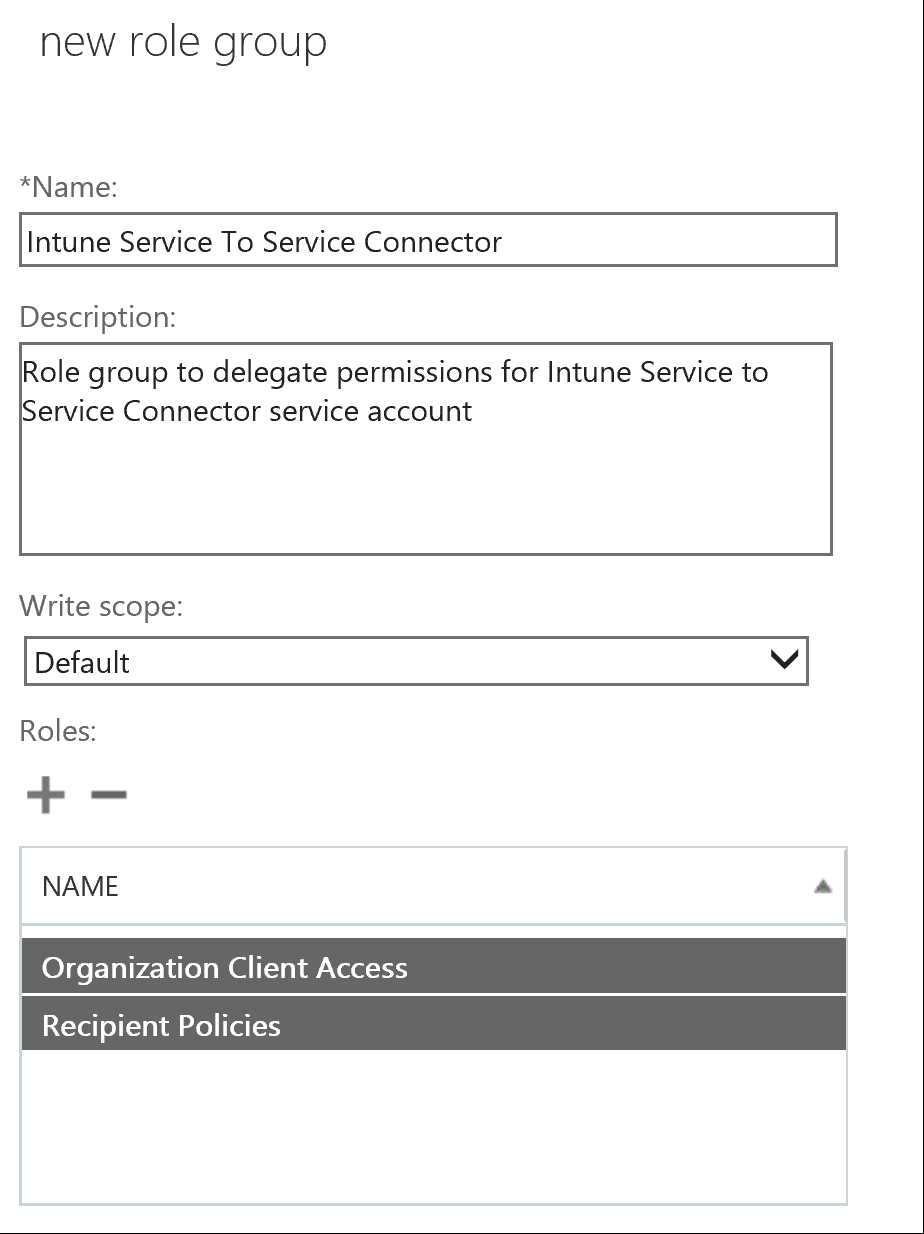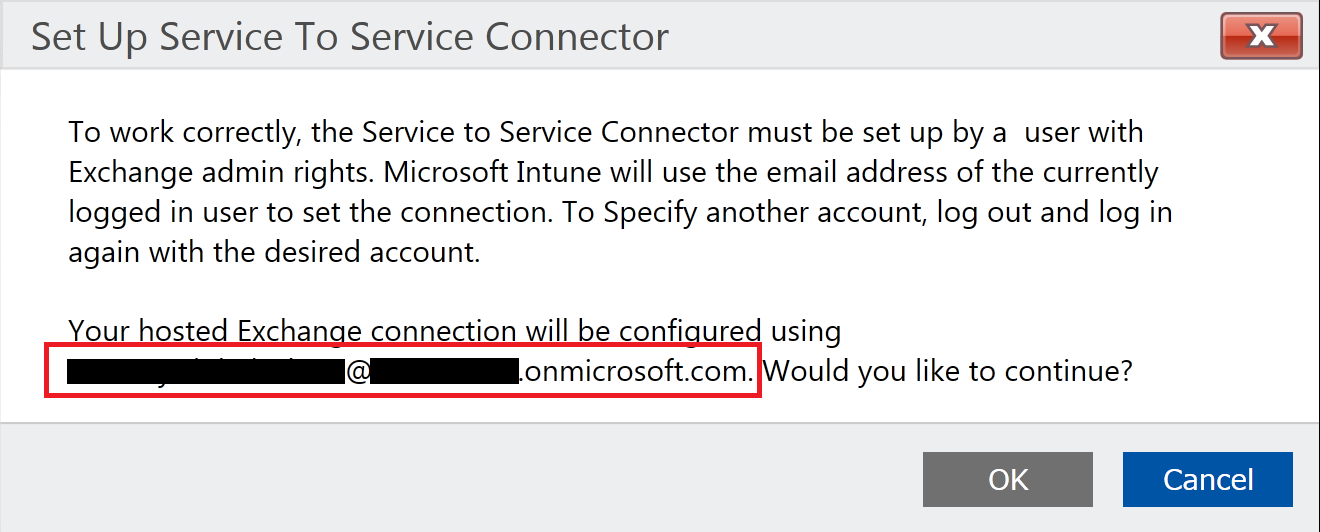If you are considering the use of Intune Conditional Access with Exchange Online it is generally recommended that you configure the Intune Service to Service Connector. While it is not mandatory, it does provide your Intune Administrators the ability to report on the effectiveness of the Conditional Access Policies on your mobile ActiveSync clients within your Exchange Online environment. In addition, if you wanted to enforce the use of the Outlook iOS/Android app using Exchange ActiveSync policies, as per my previous blog post here, setting up the connector would allow you to configure the ActiveSync access rules straight from the Intune Admin Portal.
The steps to configure the connector are already covered in the newly reskinned Enterprise Mobility Documentation, with the specific steps located here – but the purpose of today’s blog is to clarify how you would do this “properly” in a Production environment using a Service Account, as the specifics of this are glossed over in the documentation.
If you note the article, you will see a comment that “Microsoft Intune uses the email address of the currently logged in user to set up the connection”. That means if you executed the steps using your administrative account (which is what most people will end up doing if they weren’t paying attention), Intune will actually configure the connector to use your account from then onwards to perform its regular syncs (every 2 hours for a quick sync, and daily for a full sync). This is not exactly great, as now this functionality is tied to a specific user, of which that account could be expired, disabled or terminated based on the employment status of that person. Ideally, you want to be using a Service Account for this purpose.
In order to do this you are going to need the following:
- A cloud identity to act as the Service Account
- An Intune License assigned to the Service Account
- An Exchange Online license assigned to the Service Account
You may question why the licenses are required, but unfortunately that’s just the limitations imposed by Microsoft. All Intune Administrators (regardless of whether they are Tenant or Service Administrators) must have an Intune license. Furthermore, the Service to Service Connector requires that the account have a valid email address (and thus a mailbox), necessitating the need for an Exchange Online license.
Step 1 – Grant the Service Account Intune Admin Access
- Log into your Intune Management Portal with an admin account that already has Tenant or Service Administrator privileges
- Under Admin -> Administrator Management -> Service Administrators add your service account (e.g. svc_Intune_S2S@tenant.onmicrosoft.com)
Note: You won’t be able to do this unless the account has an Intune License assigned to it
Step 2 – Grant the Service Account Exchange Admin Access
- Log into the Exchange Online Admin Portal with an admin account that has Organization Management privileges
- Under Permissions -> Admin Roles create a new role
- Provide a relevant Name and Description
- Leave the Write Scope as Default
- For the Roles ensure that you include:
- Organization Client Access
- Recipient Policies
- For Members add the service account

Step 3 – Set up the Intune Service to Service Connector
- Log into your Intune Management Portal with the Service Account
- Under Admin -> Microsoft Exchange -> Set up Exchange Connection select the Set up Service to Service Connector button at the bottom
Note: If the service account doesn’t have an email address (i.e. Exchange Online License with a mailbox), you will get an error indicating so. Also, if the service account doesn’t have an Intune license assigned, it will throw up an ‘unexpected error’.
- Click OK when prompted. Use this opportunity to verify that the correct account is being used (i.e. you haven’t forgotten to sign out with your original admin account)

- It will take about 10-15 mins for it to verify the account and configure the connection, but once it is successful, you will see a status update with a green tick like below:

Optional Step – Hide Mailbox of Service Account
Since we’ve had to give the service account an exchange mailbox (which it doesn’t use), it’s probably a good idea to hide it from the GAL so users don’t get confused.
- Log into the Exchange Online Admin Portal
- Under Recipients -> {Search for user} -> Edit -> General and select Hide from Address lists
And there you have it, a much more secure and cleaner way to configure your Intune Service to Service connector for Exchange Online!

I received the below error:
“exchange admin account not valid to service to service connector”
Ive set the permissions up as you have advised. Have you seen this before?
Hi Ian,
Unfortunately I haven’t seen that error before. Just to clarify, that account that you are using, is it a member of any other Exchange Admin roles?
Regards,
Dave.